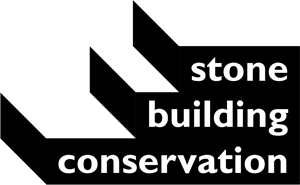
About
Stone Building Conservation specialise in the care and repair of old, listed and historic buildings.
I started Stone Building Conservation to work directly with clients and help develop their understanding of old buildings and guide them through the process of historically sensitive repairs. With a focus on smaller building conservation projects within Dorset and surrounding counties, all projects regardless of size will receive the same personal attention.
-
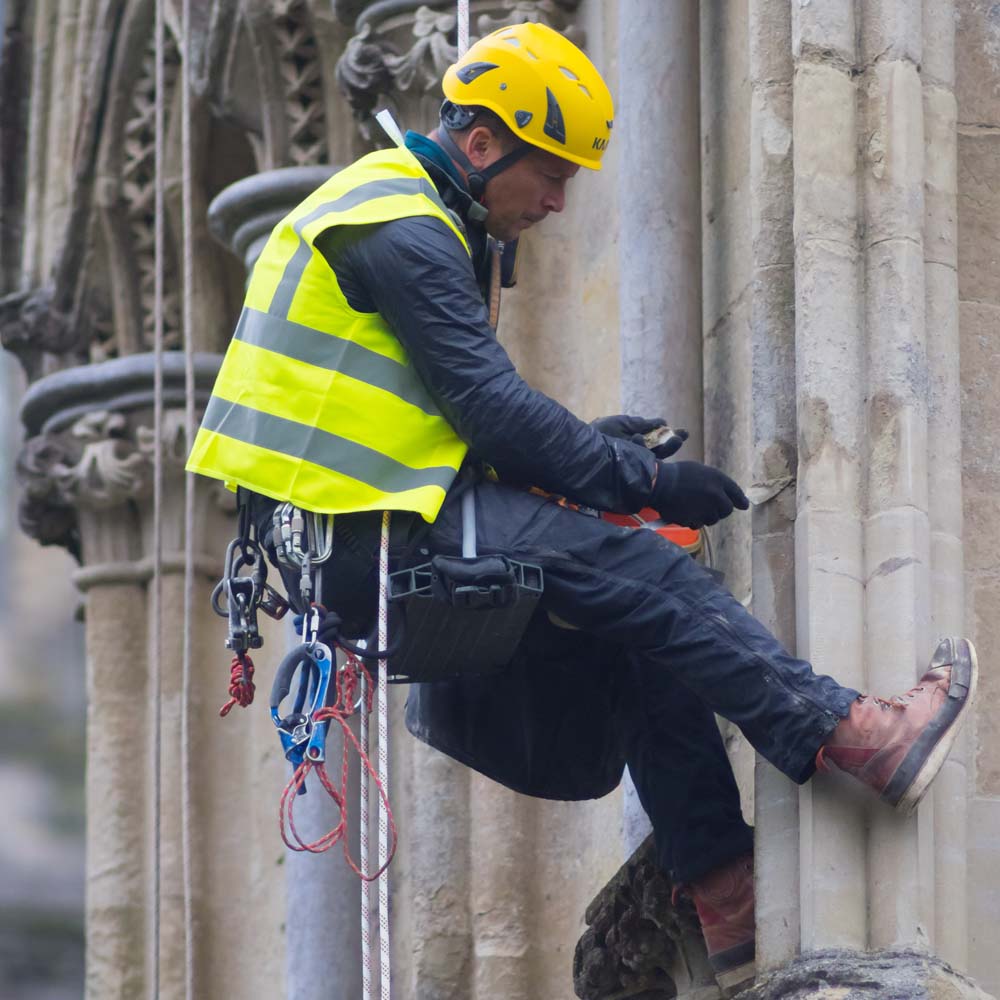
Carrying out mortar repairs on the West Front of Salisbury Cathedral during the summer of 2017
-
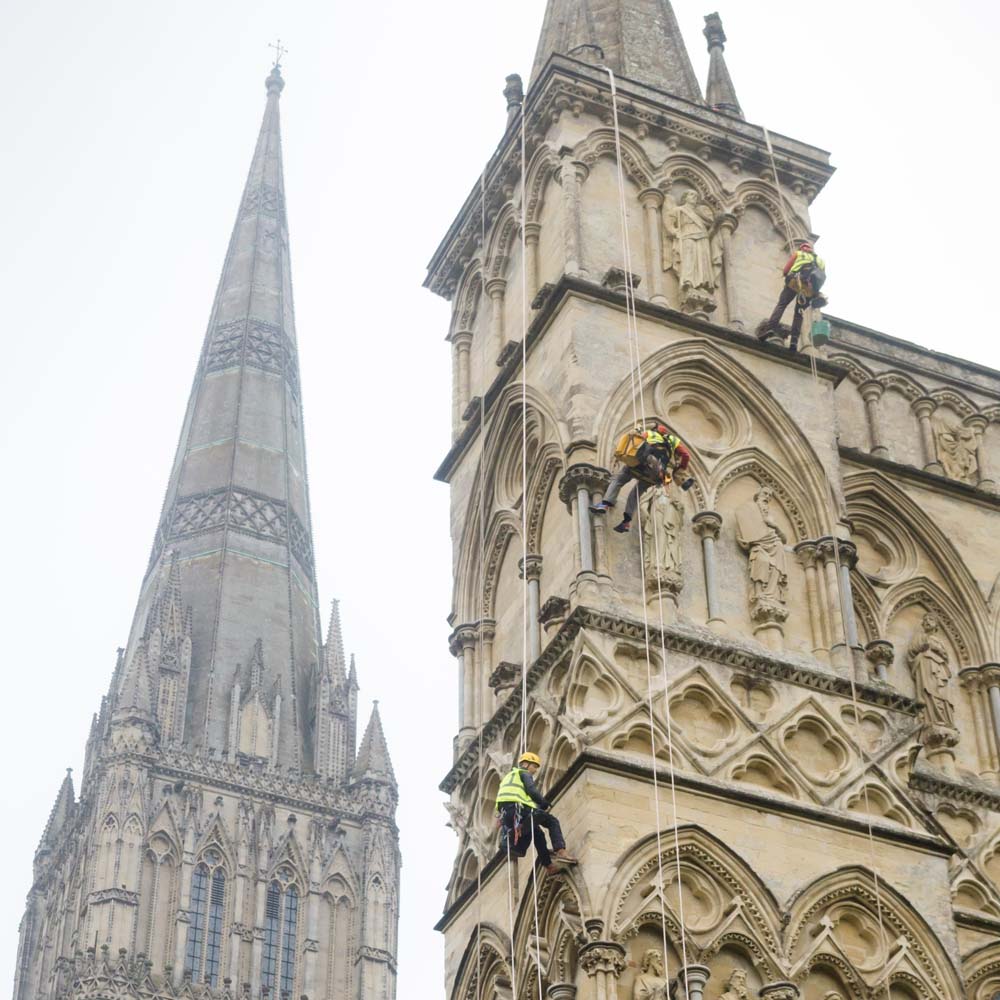
Working with Vitruvius Conservation who specialise in rope access building conservation
Please don’t hesitate to contact me if you have any questions or require advice.
Conservation
Building maintenance and repair is necessary to tackle the inevitable decay and deterioration that occurs due to climatic conditions, wear and tear, neglect or the use of unsuitable materials. But before an old building can be successfully repaired it must be understood. The use of appropriate and compatible materials and traditional techniques is central to the principle of informed conservation.

“These old buildings do not belong to us, they have belonged to our forefathers and they will belong to our descendants unless we play them false” William Morris 1886
The first duty of care is to achieve the long-term survival of our built heritage by preserving, repairing and maintaining with sensitivity. At the same time, it is important to understand that all historic buildings have been subject to change throughout their lives and that historic buildings are not simply time capsules to be frozen in time. Conservation is the management of change and our old buildings should be kept in use and be relevant to our modern lifestyle.
Before any work is carried out, it is vital to determine the different kinds of permission you may need, and if the building is listed or within a conservation area it may be subject to special controls. We will provide guidance on the suitable approaches to the maintenance and repair of your old building.
Services
We offer our services to owners and custodians of traditional buildings of many types, including listed and unlisted, vernacular, residential, commercial, sacred and agricultural.
Every old building is unique and no two conservation approaches are identical. It is the very nature of conservation work that the solutions are almost always bespoke. The most frequently proposed building conservation procedures are repointing and stone repair. However, there are many other procedures that range from crack stitching to limewashing and we encourage you to discuss your needs.
- Repointing
-
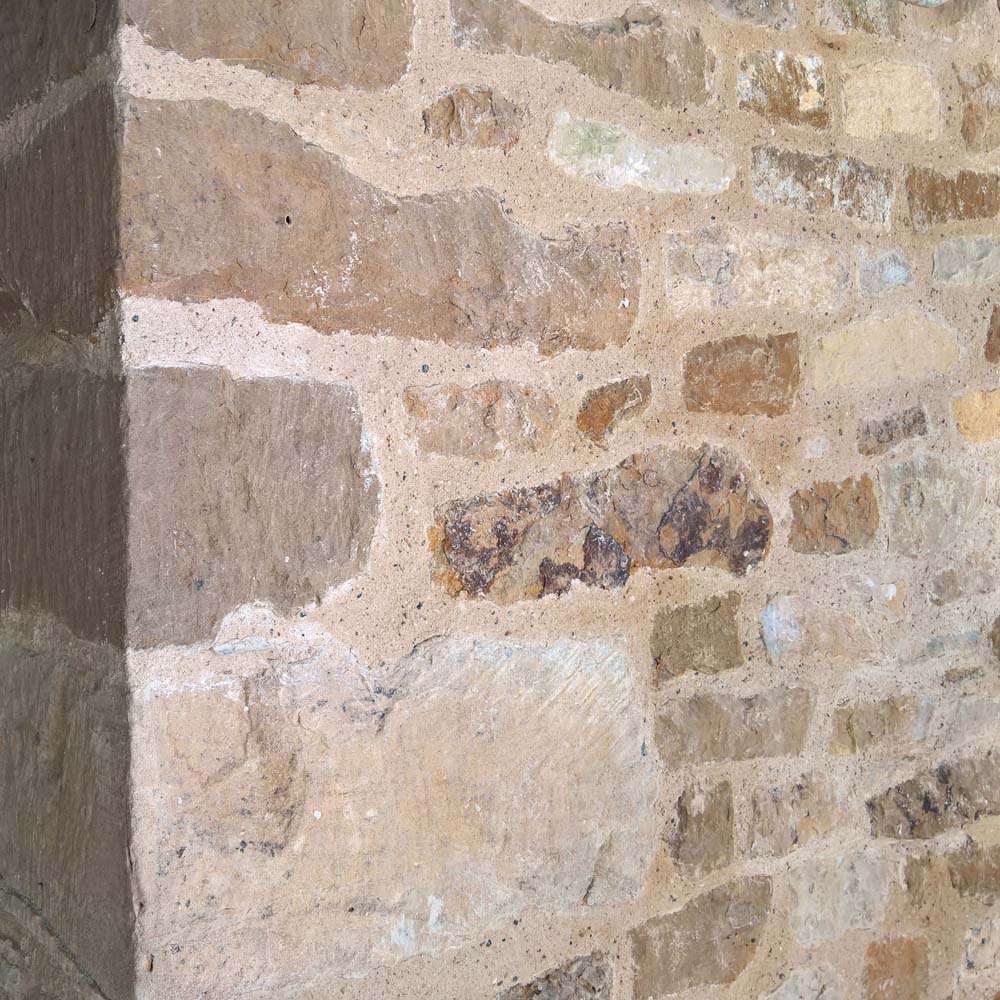
It is widely recognised that the use of inappropriate materials in the repair of historic buildings is a source of many problems. Cement is generally unsuitable for use in traditionally constructed buildings, particularly those built with softer and more permeable materials including natural stone, lime, brick and timber. Unfortunately, cement was considered a ‘wonder material’ and was often used to repair and repoint traditional buildings, to their detriment. Cement is non-permeable and cracks due to its relative inflexibility, this traps moisture within walls, leading to dampness and accelerated stone decay.
Many conservation projects involve the removal of cement repairs and repointing and replacing it with more appropriate and compatible lime mortar. Where moisture can evaporate freely and breathability is not impaired, the walls of traditionally constructed buildings will remain relatively dry.
Where suitable we aim to work with traditional hot mixed lime mortar as this is the only way to replicate lime rich historical mortars of the past. The more lime rich a mortar is, the more it will breathe. We are experienced in the preparation and use of hot mixed lime mortars on site which is today a specialist craft.
- Stone repair
-
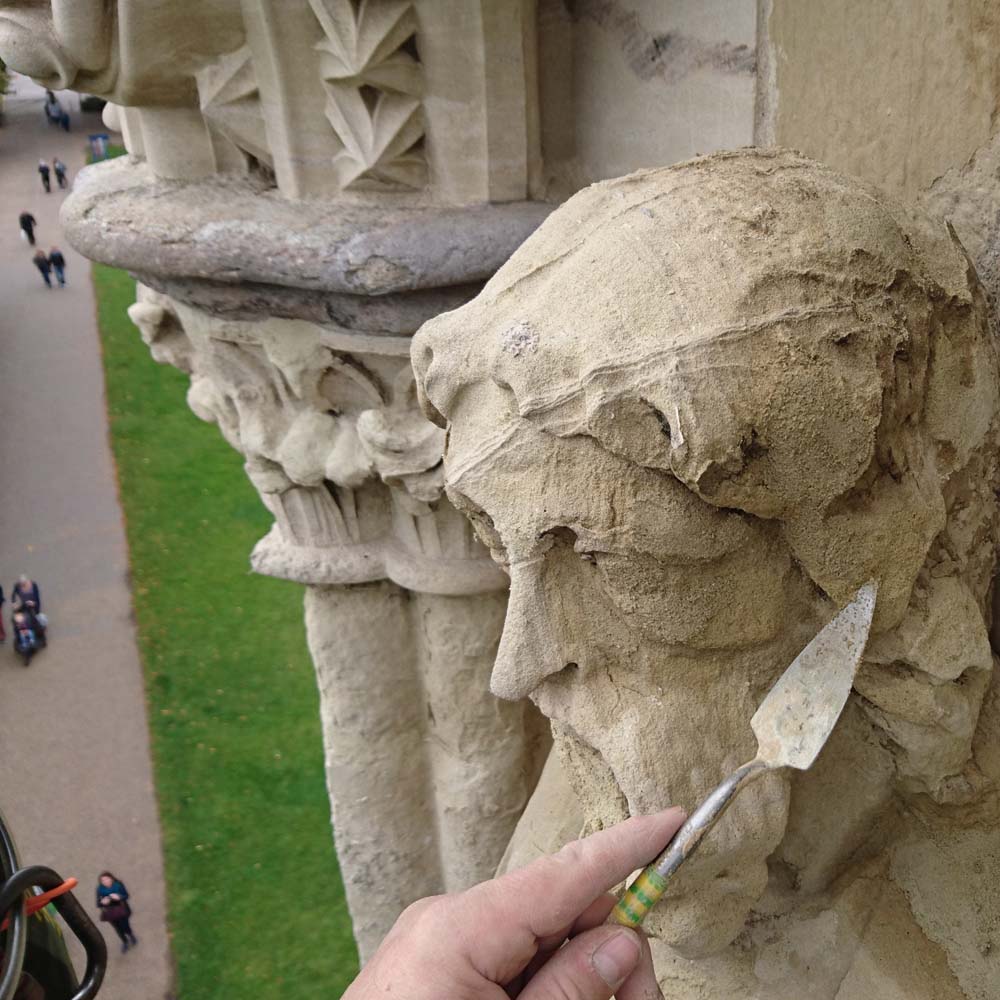
Stone is not, as is often thought, some eternal material with unlimited life. There are numerous factors that can lead to stone decay, which may affect its aesthetic appearance or even lead to structural failure. For example, ferrous fixings embedded within stone structures corrode and expand over time resulting in cracking and dislodging of stonework. Atmospheric pollution can cause thick carbon deposits to form on stonework, blistering the surface and turning the stone underneath to powder.
A conservation approach to historic masonry starts with a considered assessment to determine the cause of stone failure, and where possible halt or minimise the decay. At one end of the scale the least invasive remedial measures might involve stone cleaning using physical, chemical or mechanical methods. More interventional, but invisible procedures to repair broken and unstable stone may involve pinning using stainless steel dowels as reinforcement below the surface. Areas of lost stone can be rebuilt using a natural mortar repair. Replacement of the stone may be necessary where other options are not feasible, this may involve cutting out localised areas of defective stone renewing with a new piecing-in, or a total replacement with new stone.
Portfolio
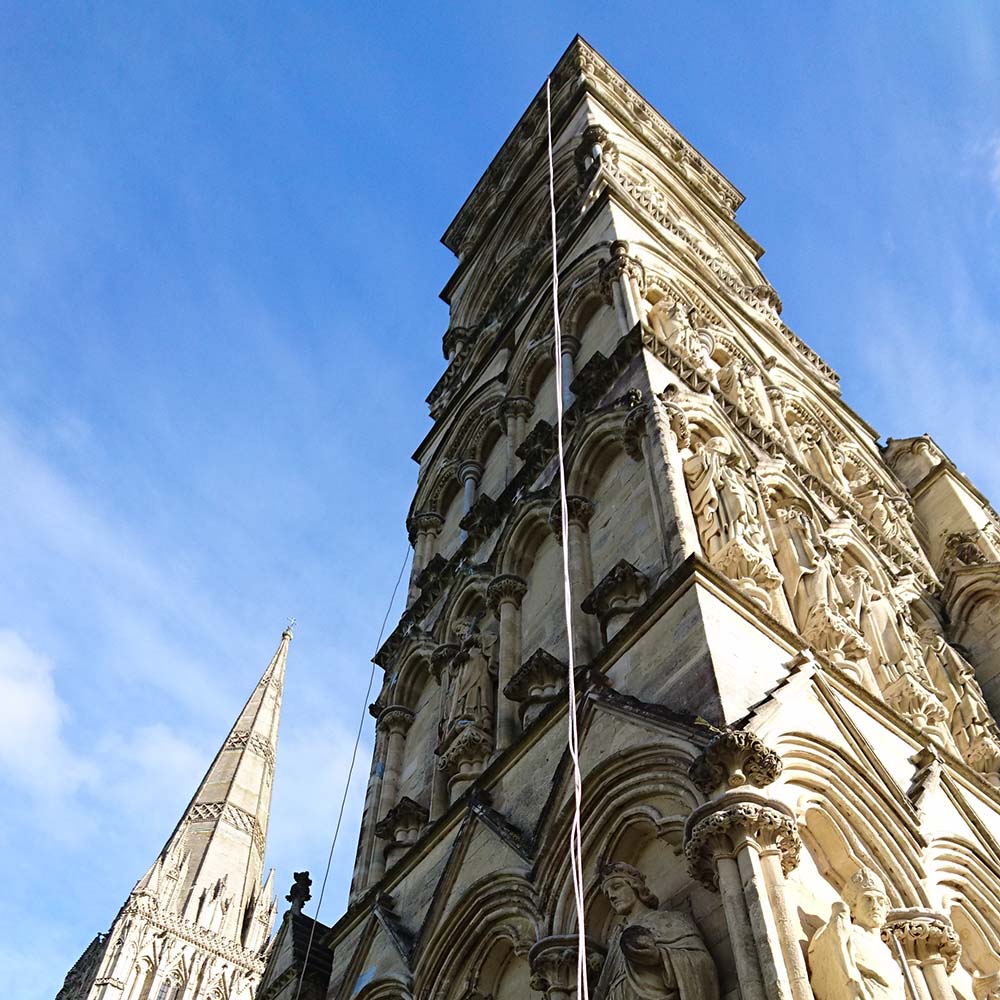
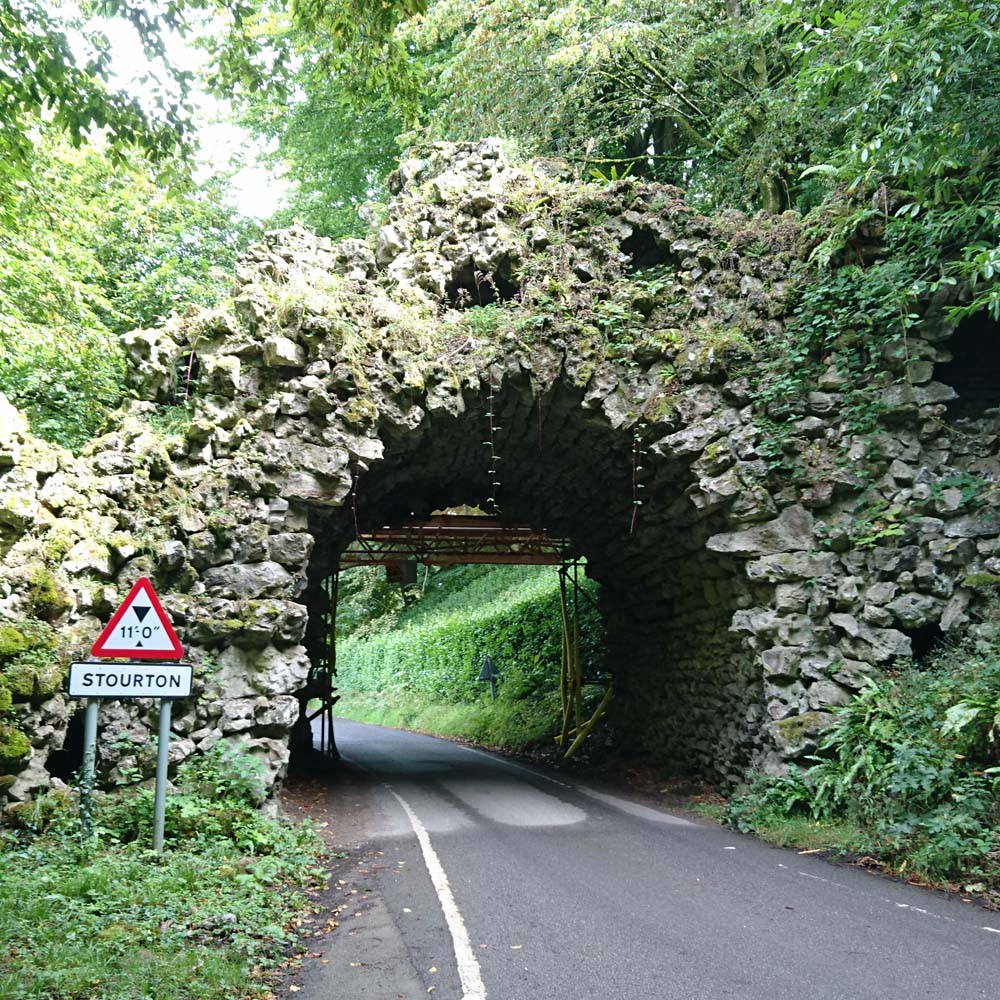
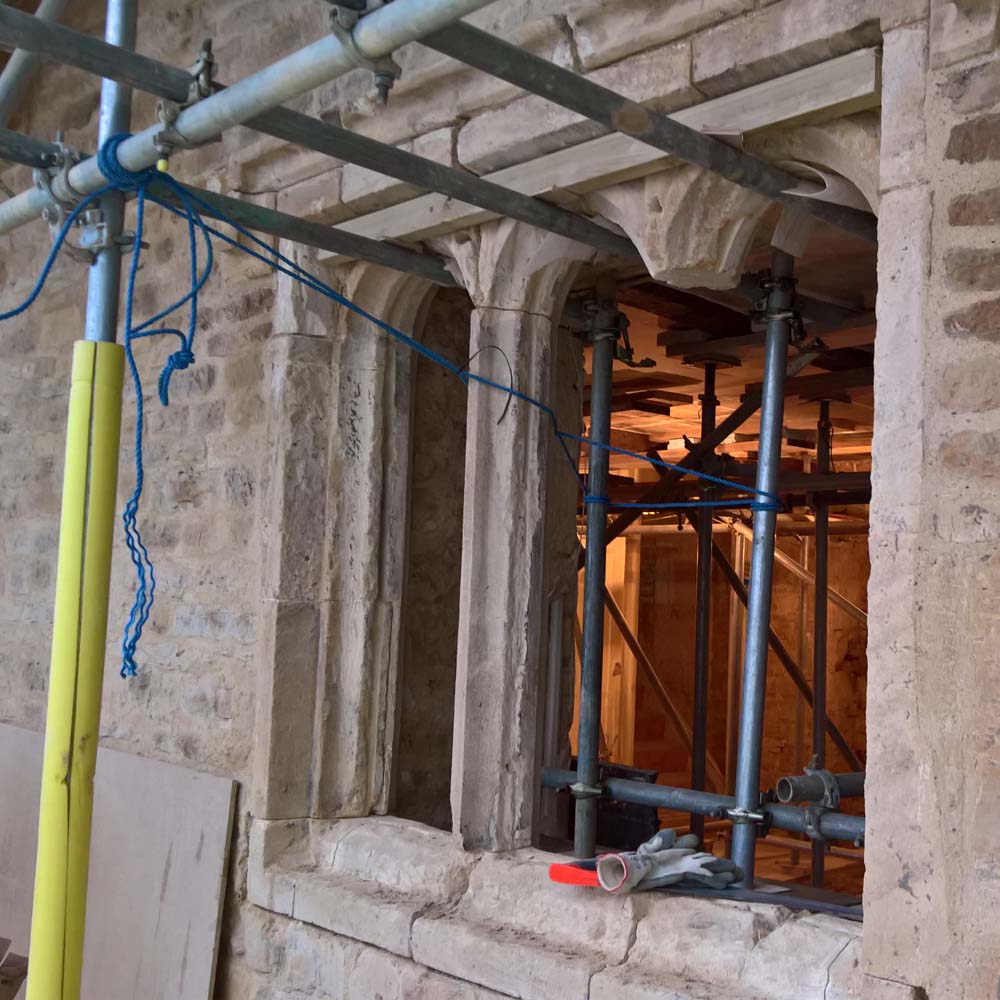
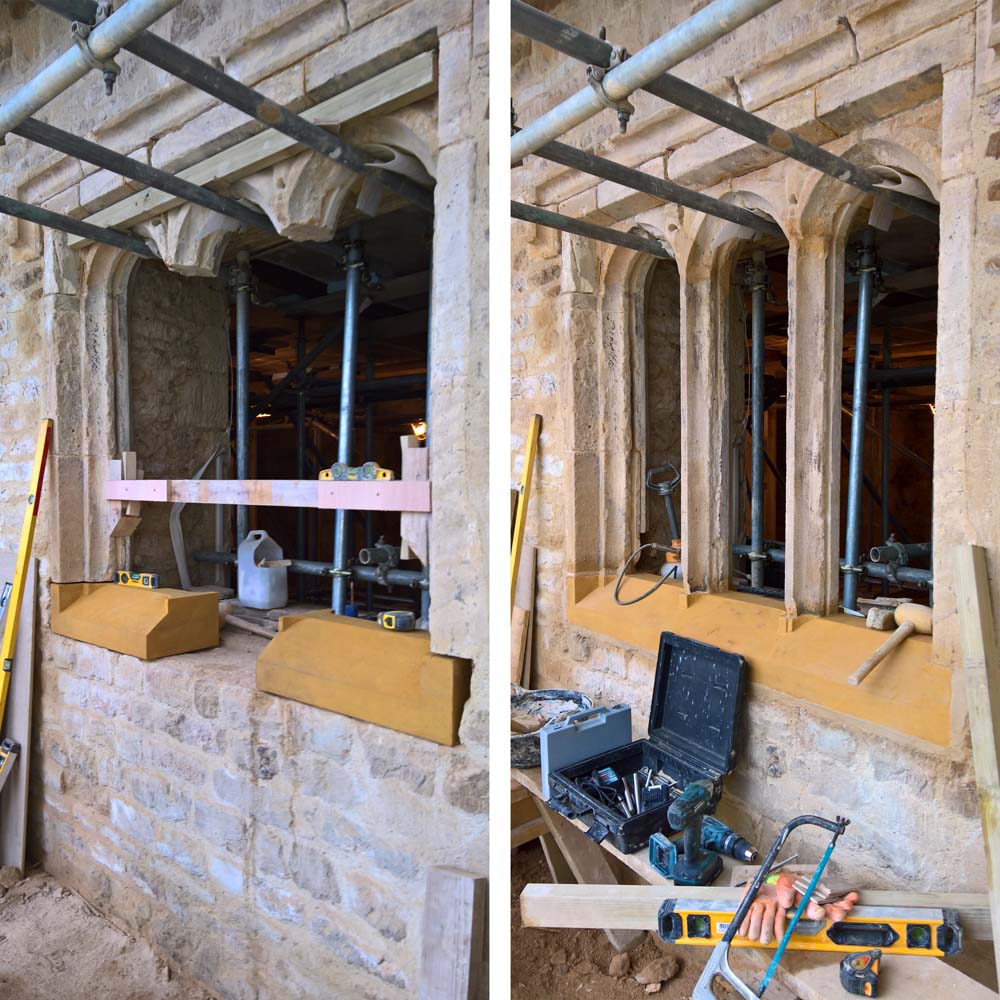
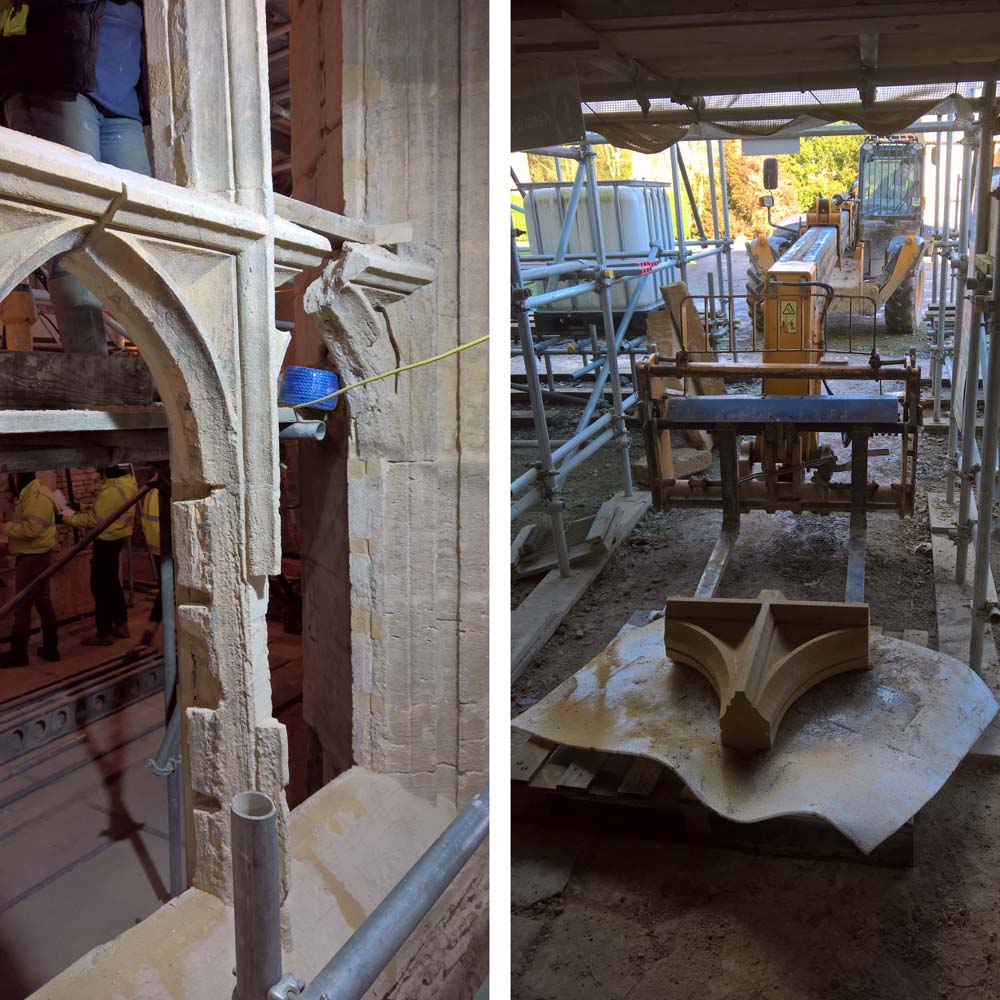
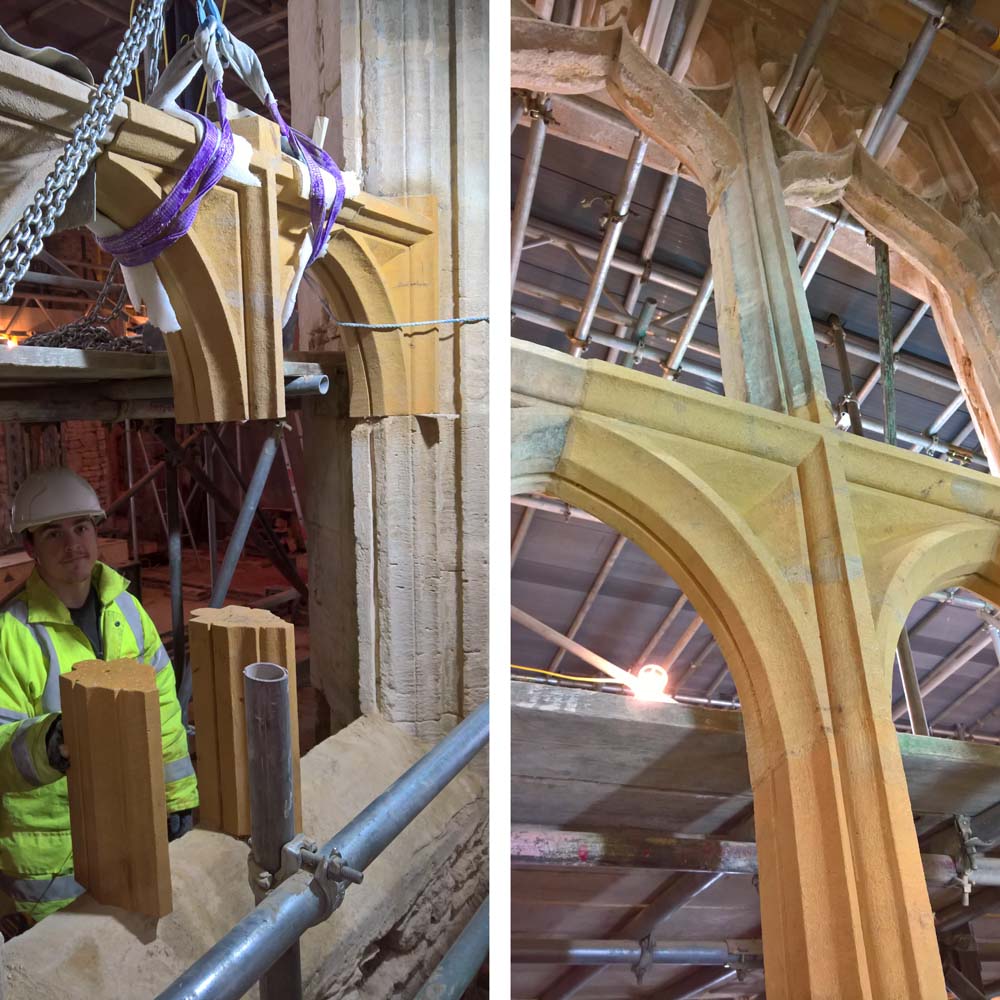
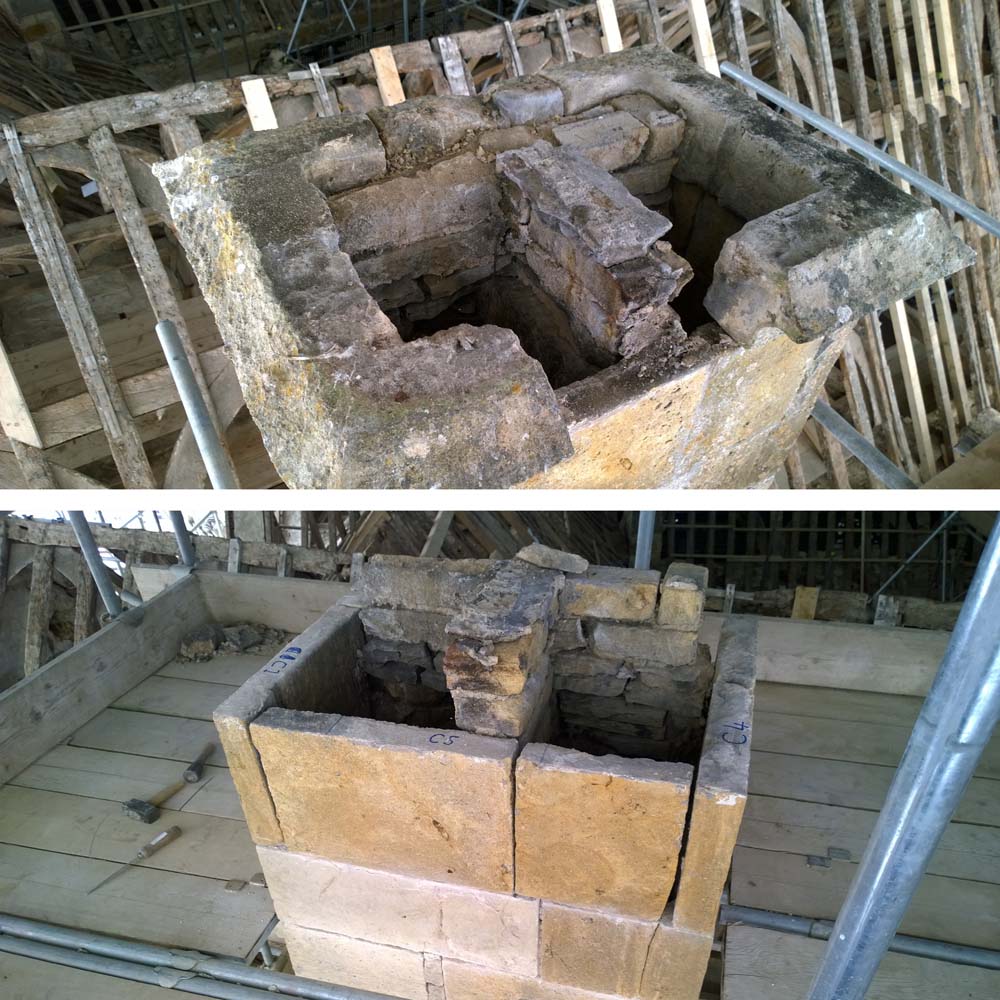
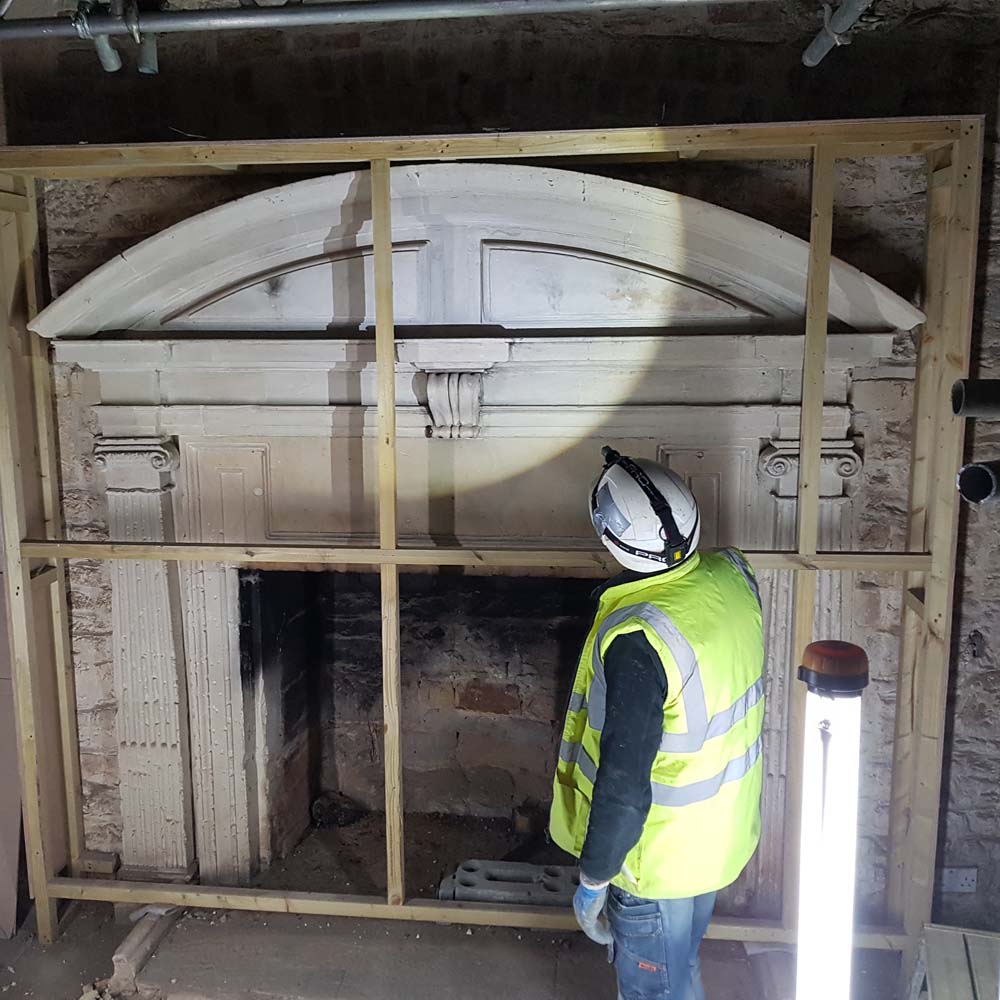
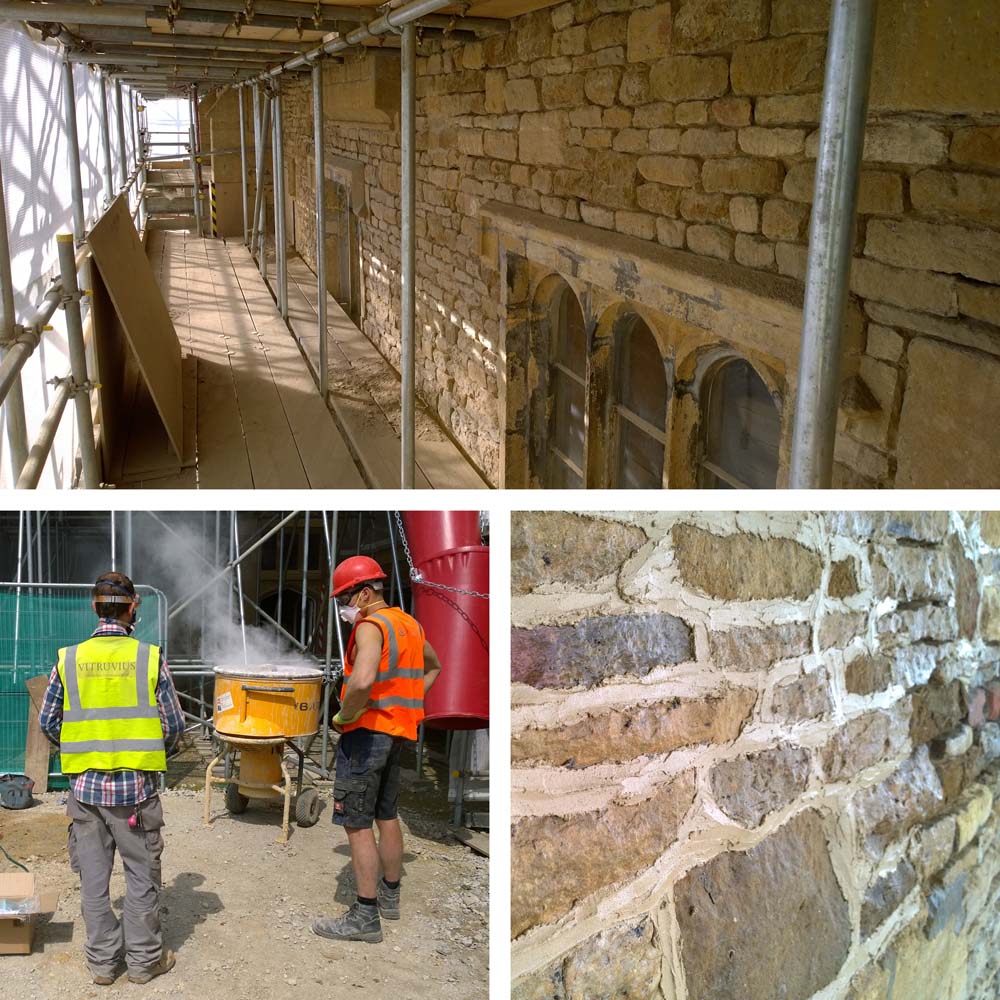
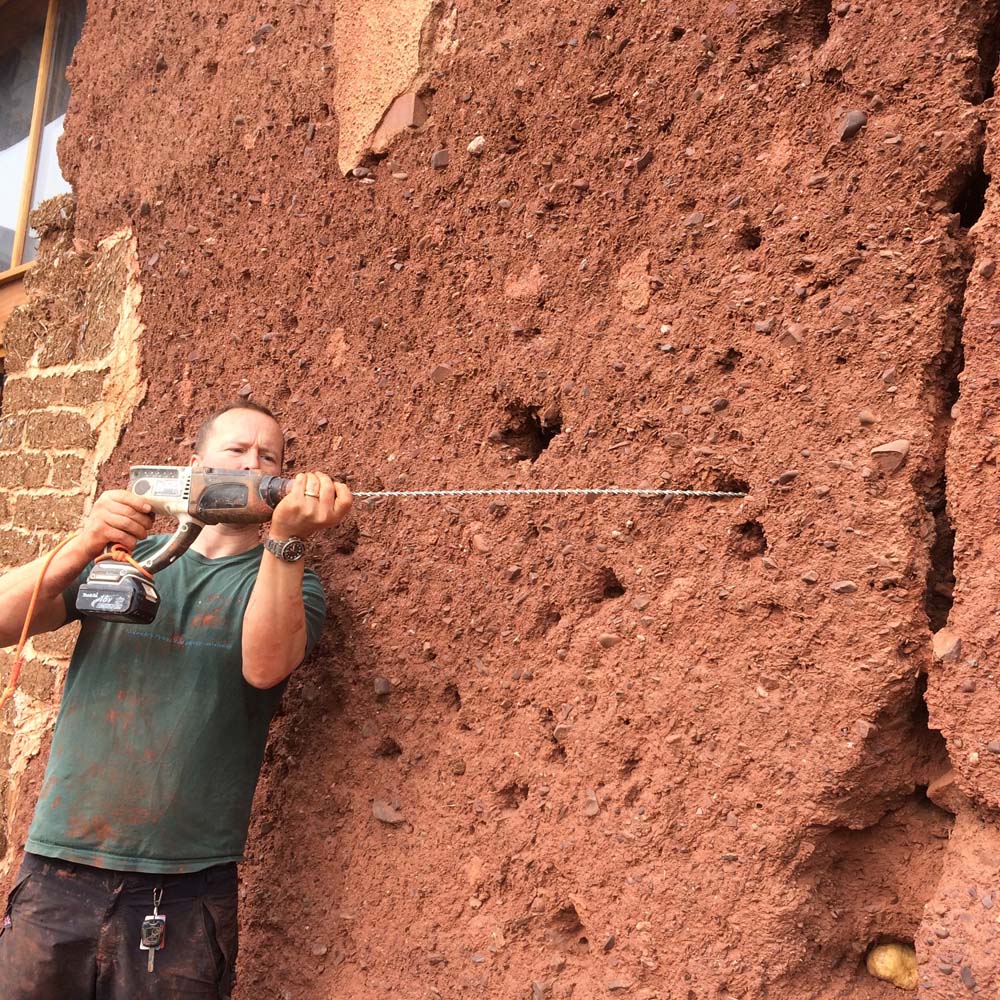
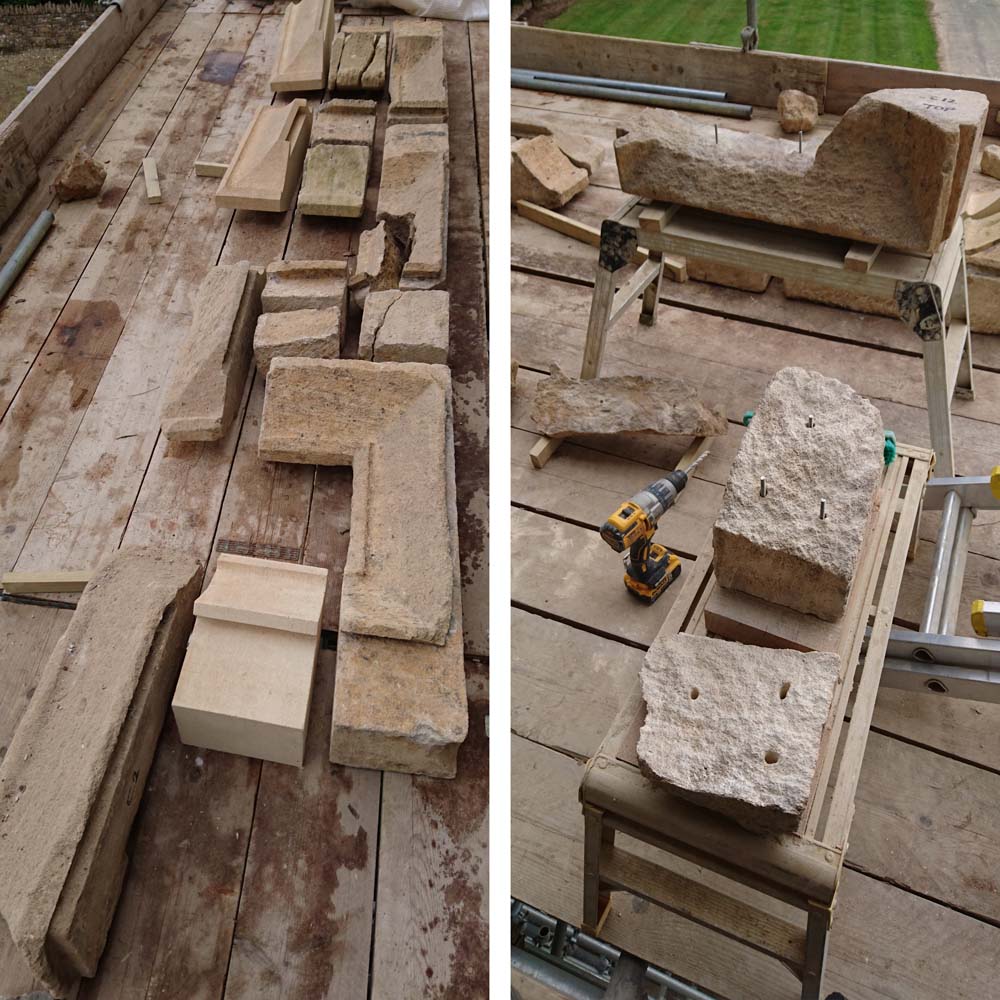
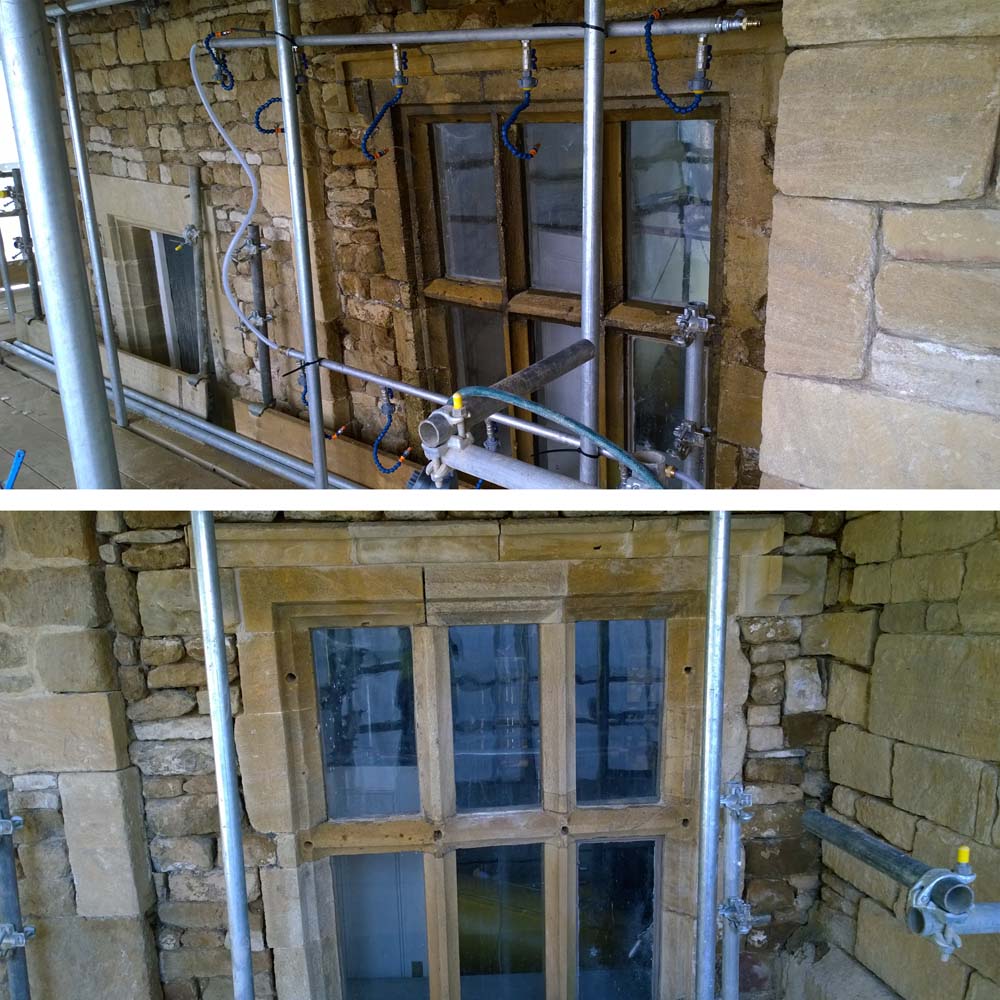
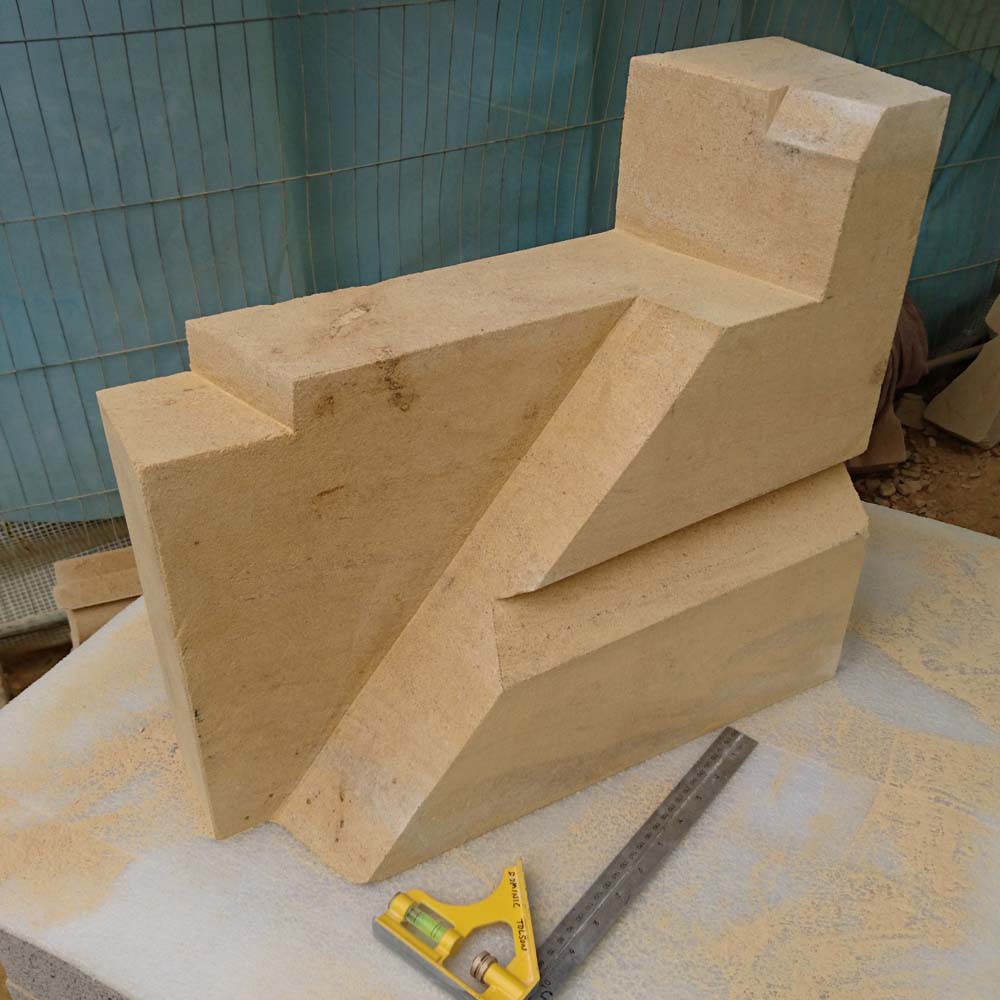
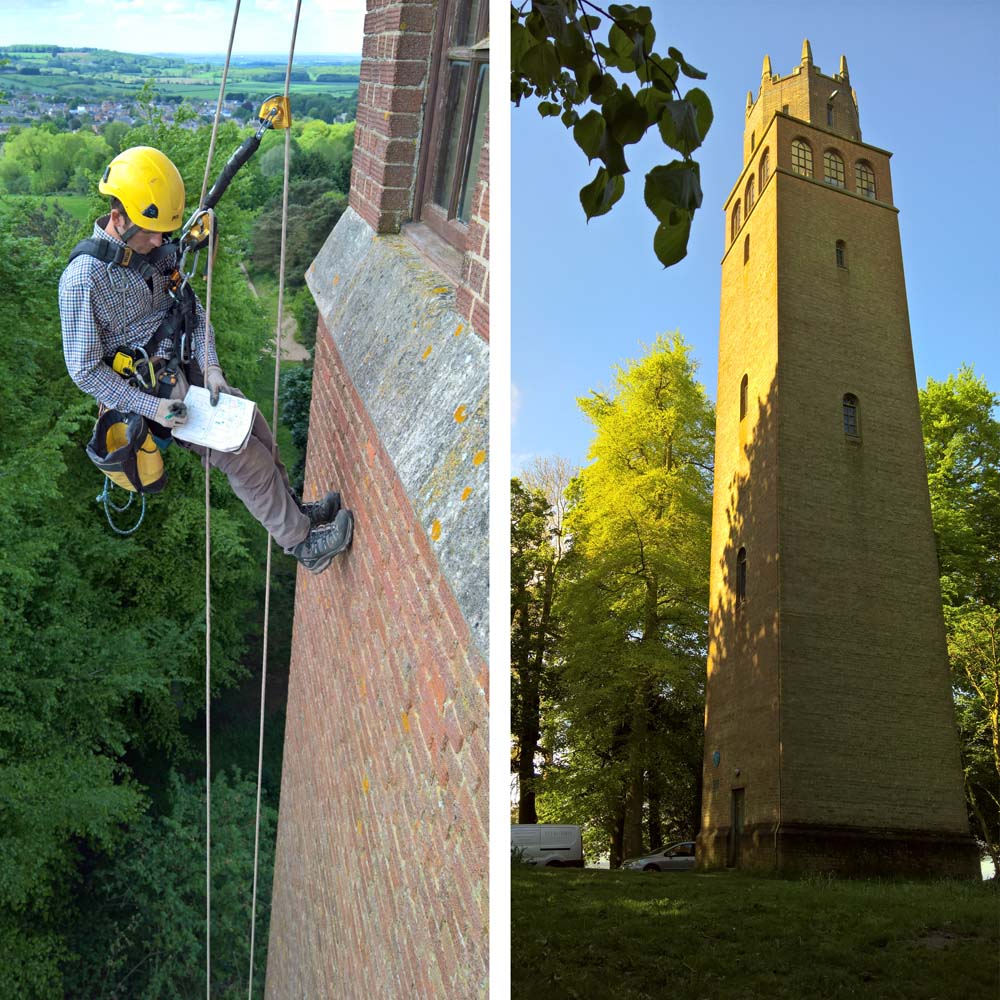
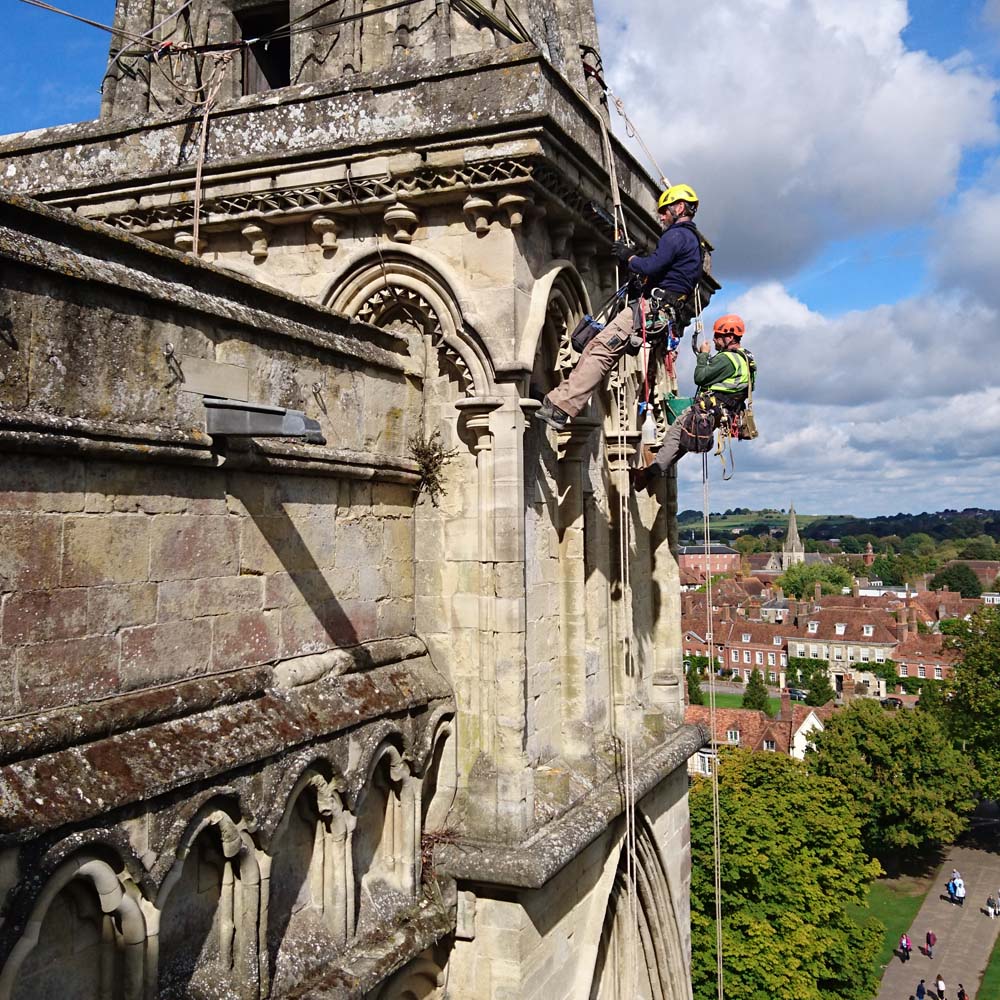
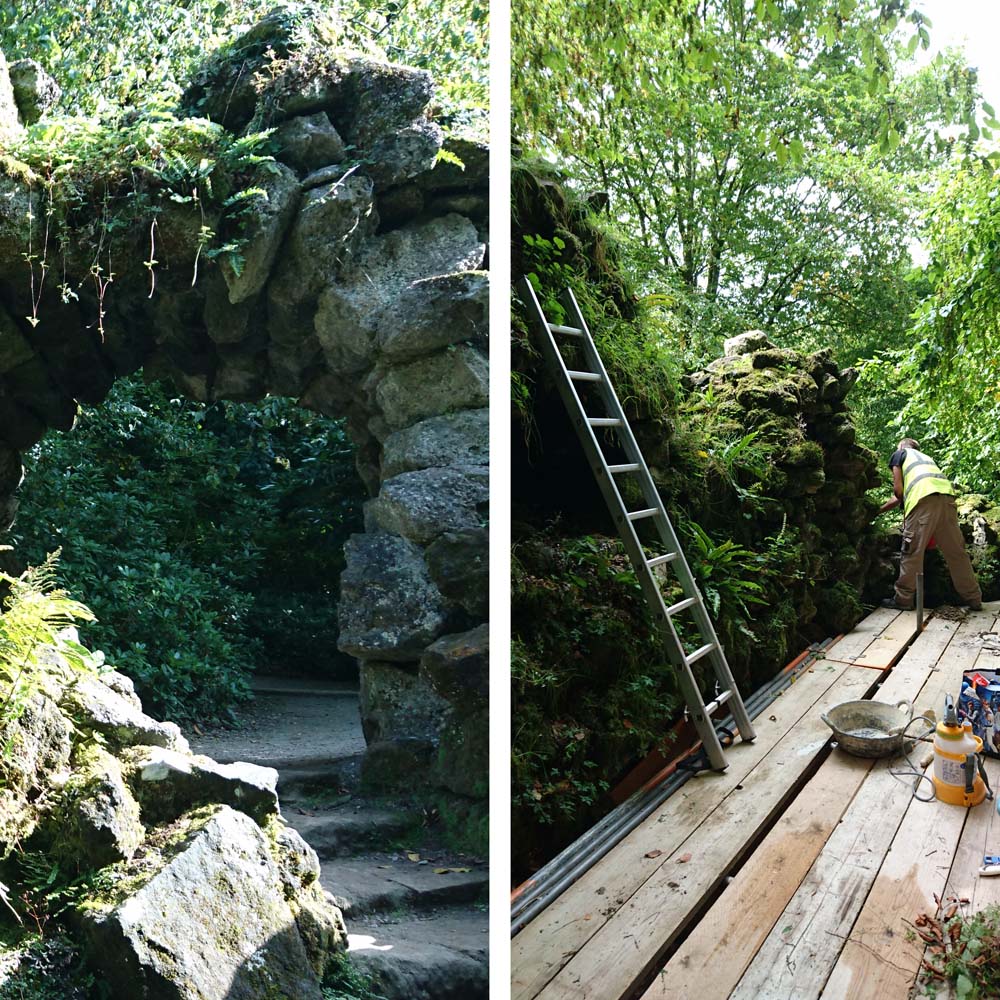
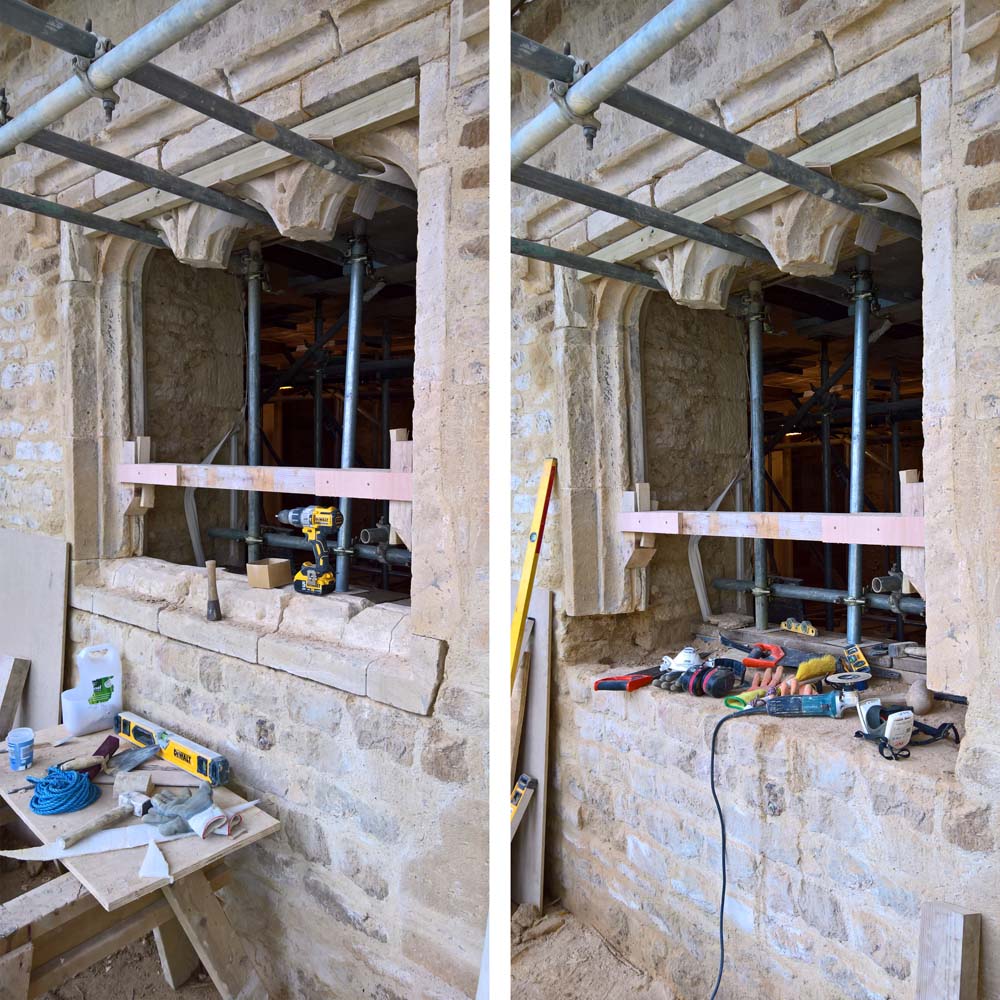
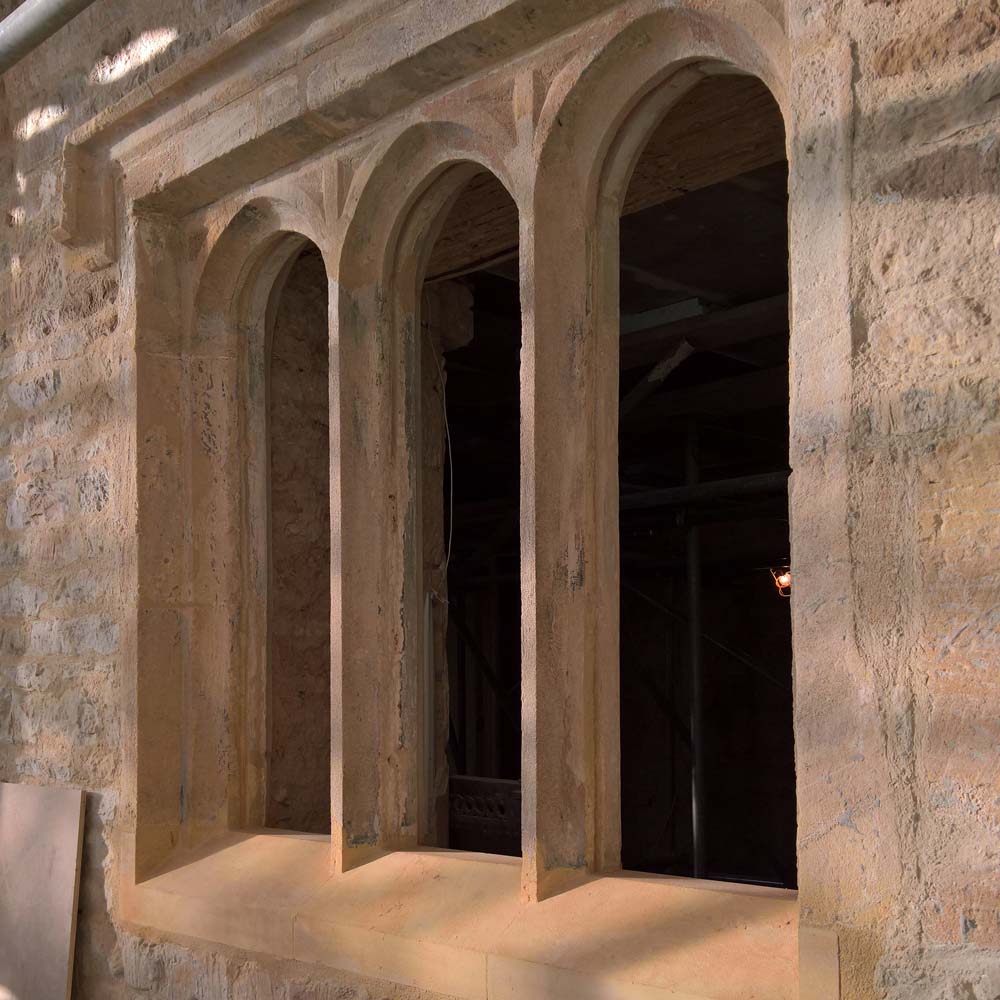
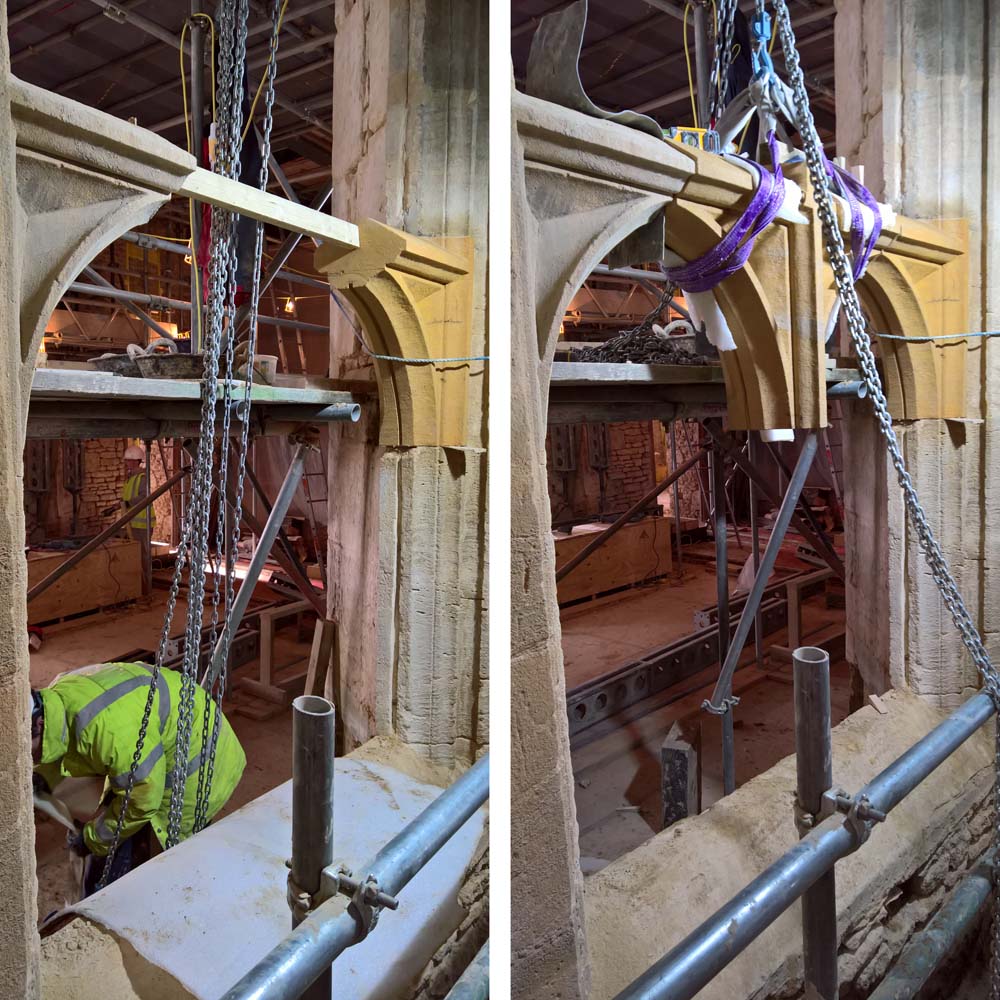
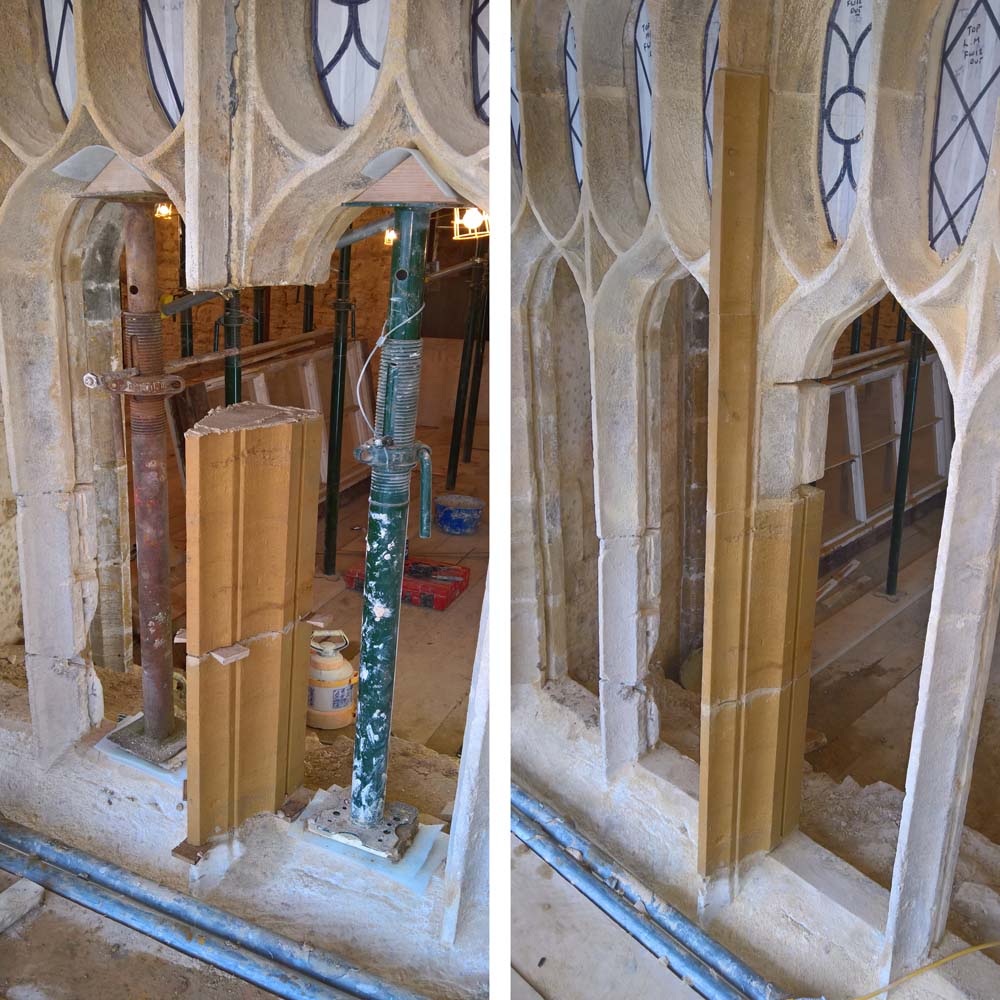
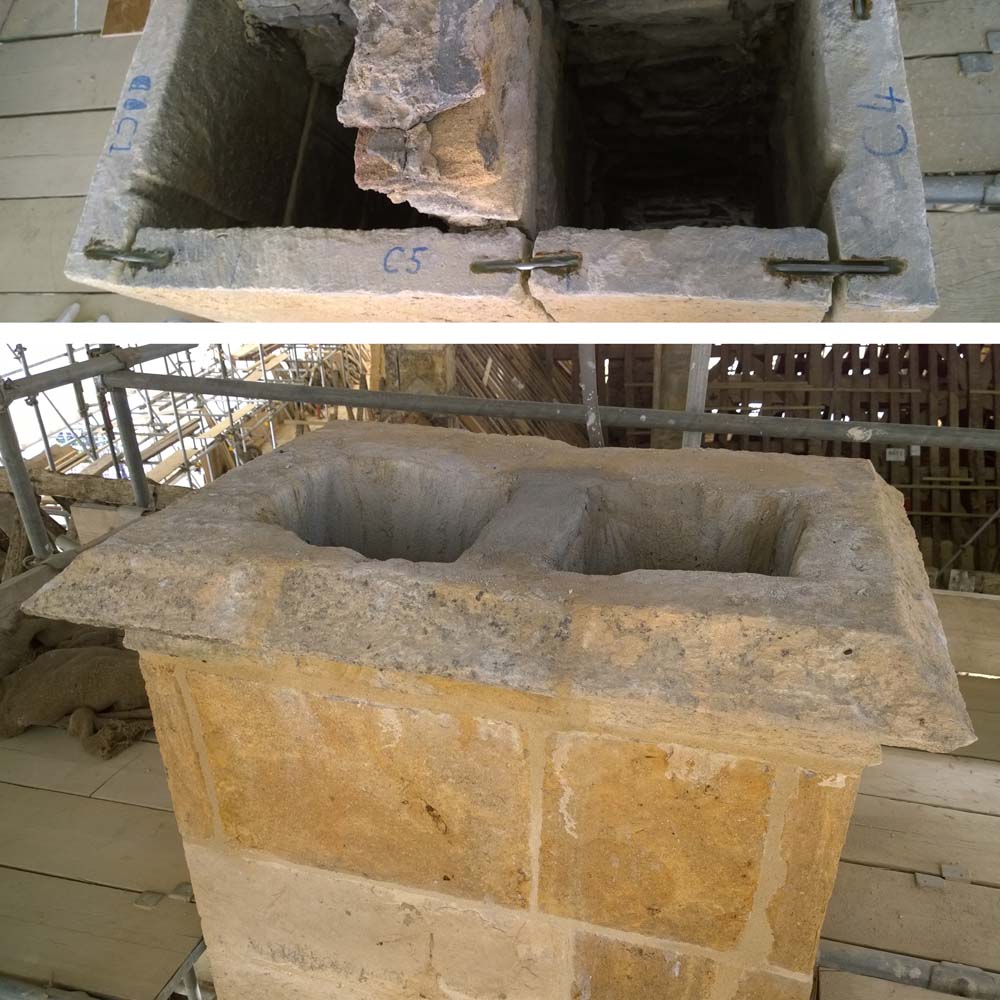
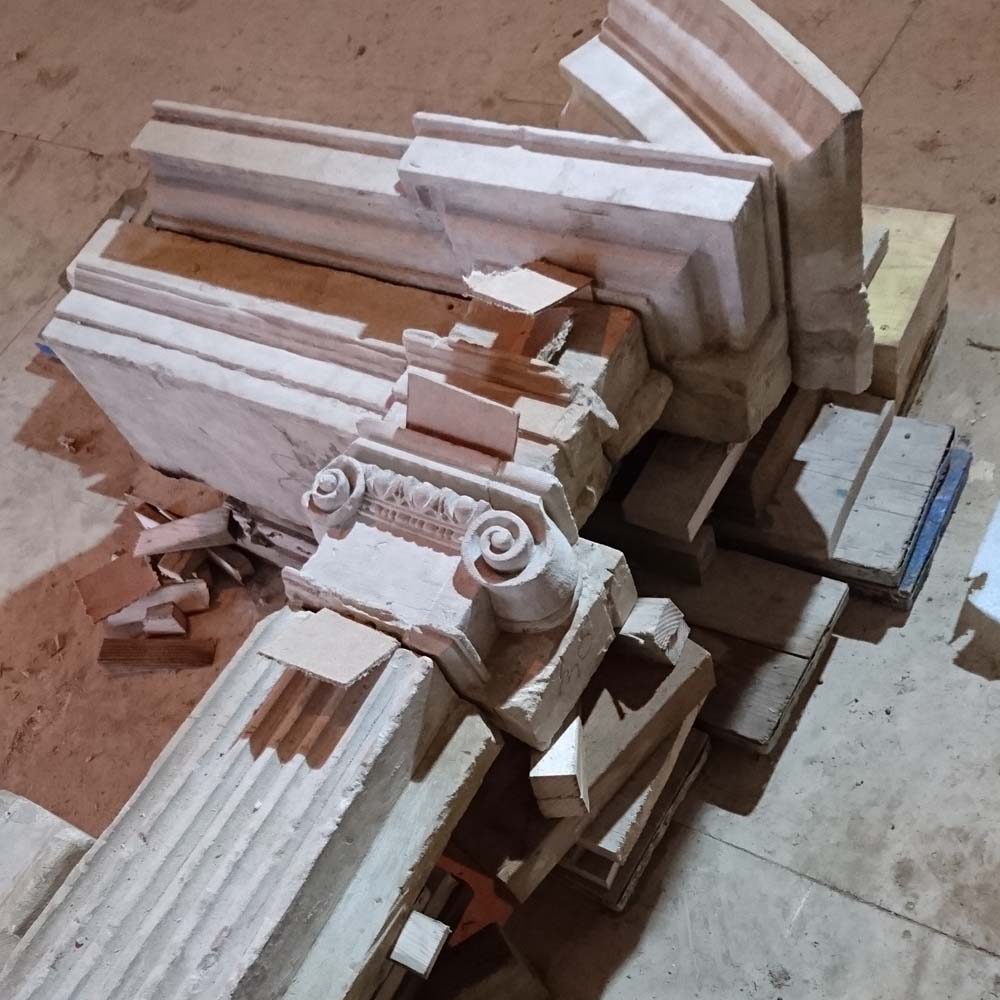
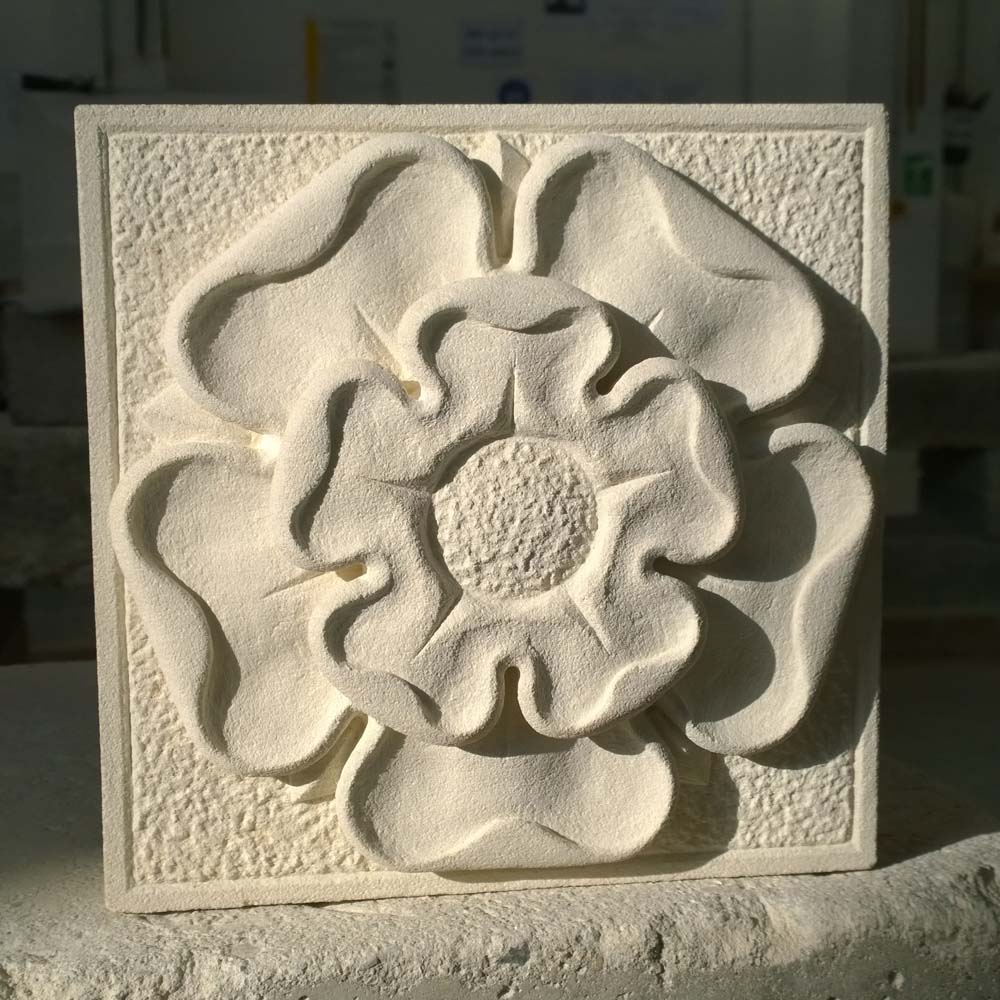
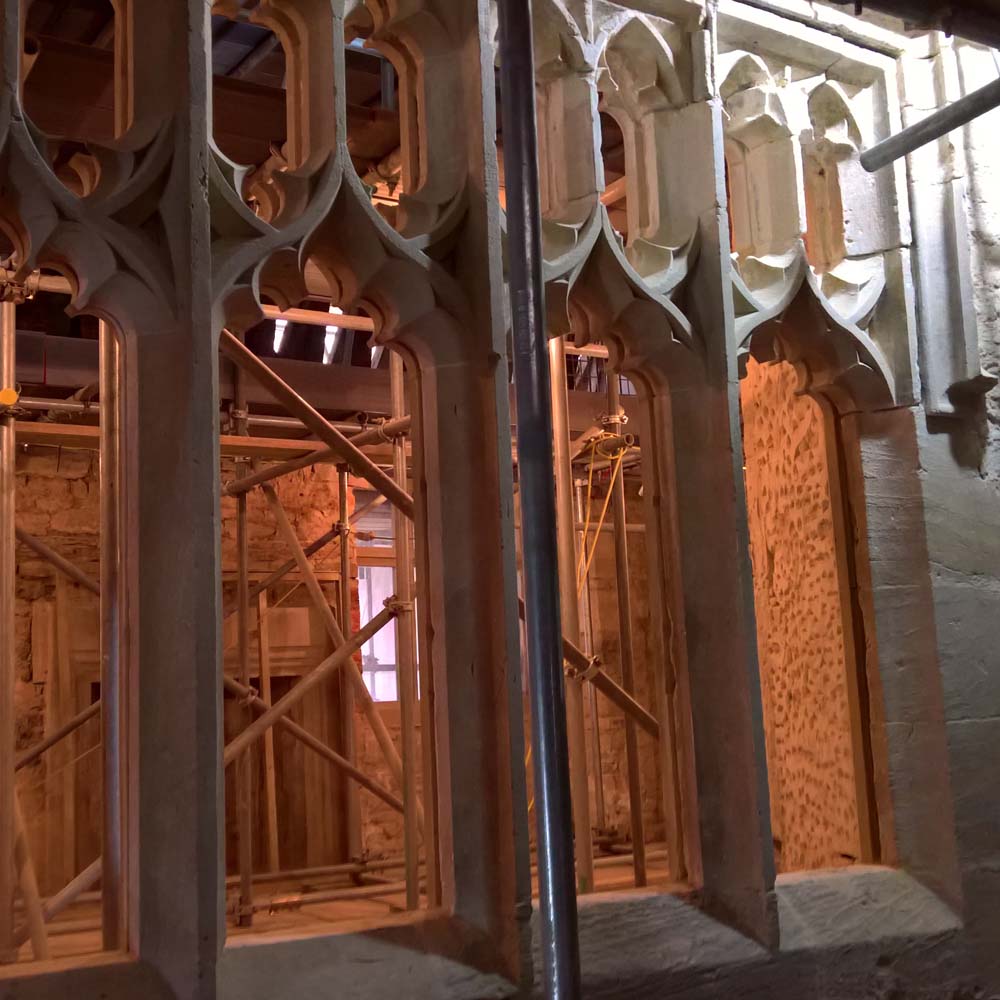
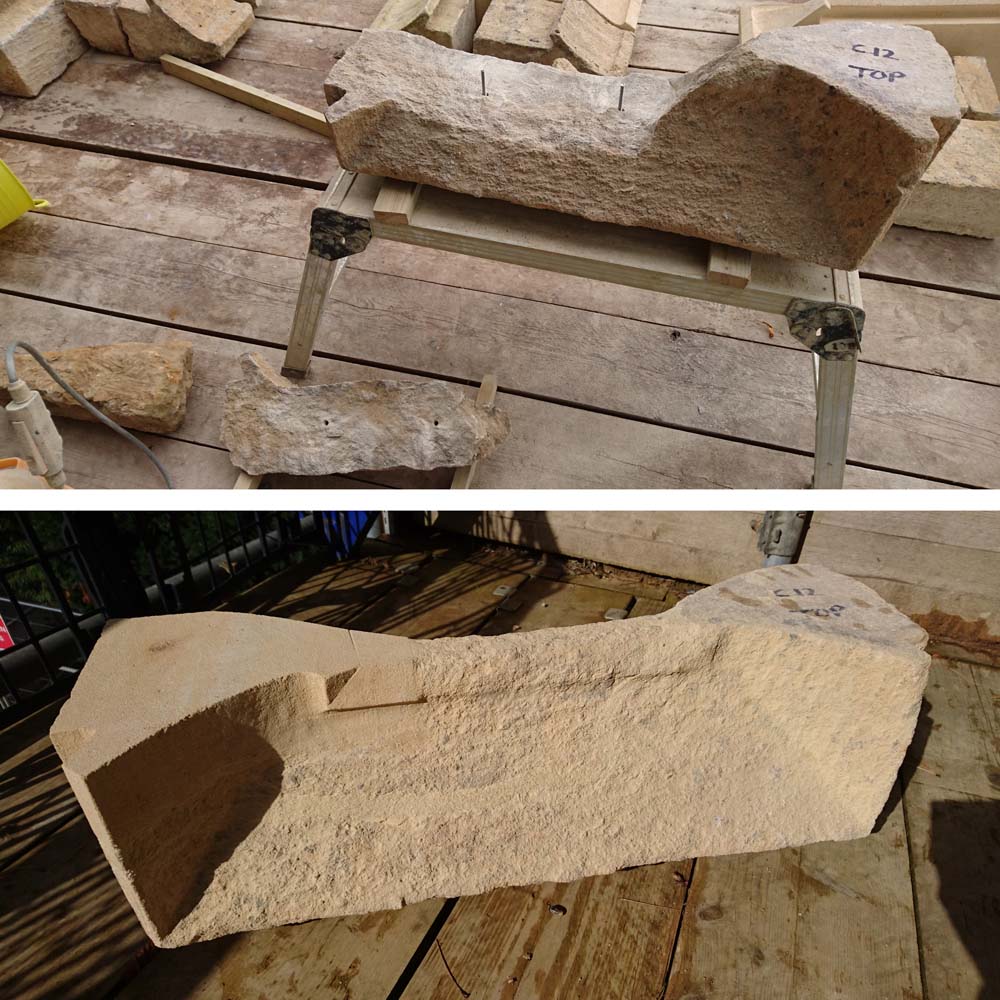
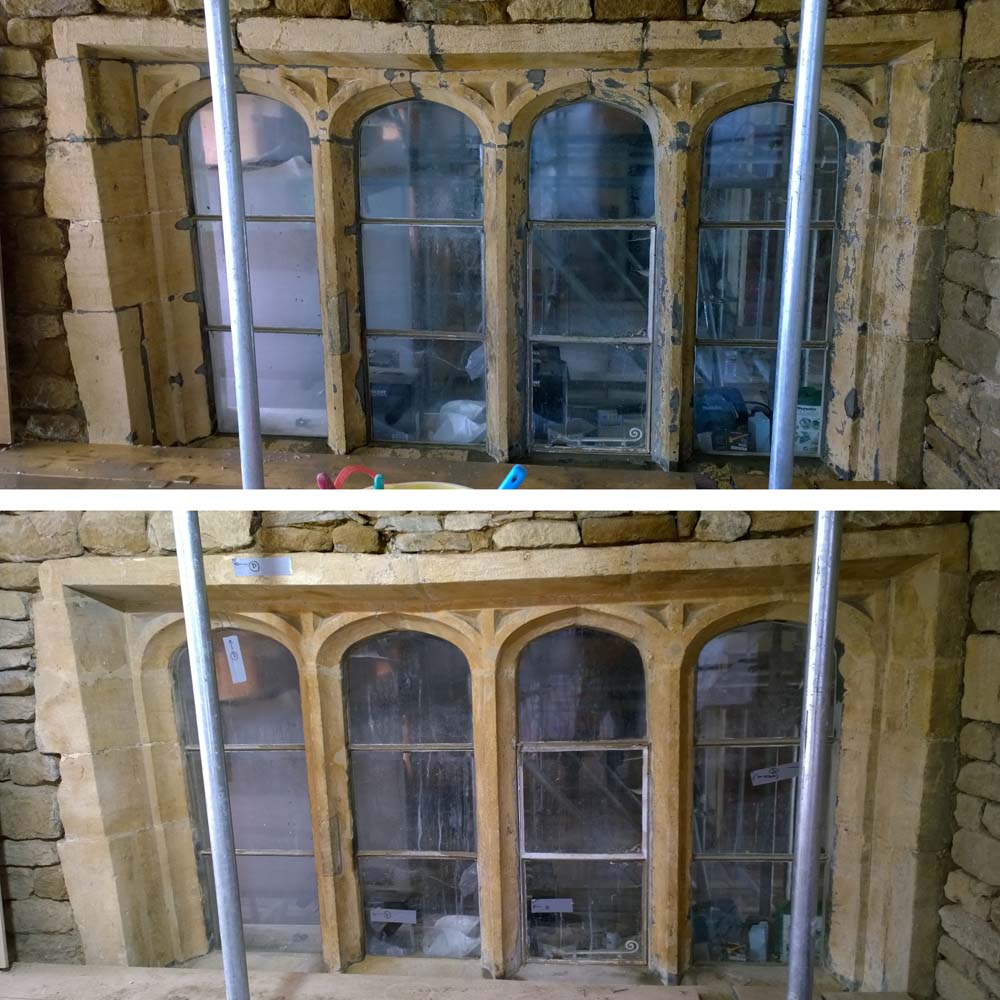
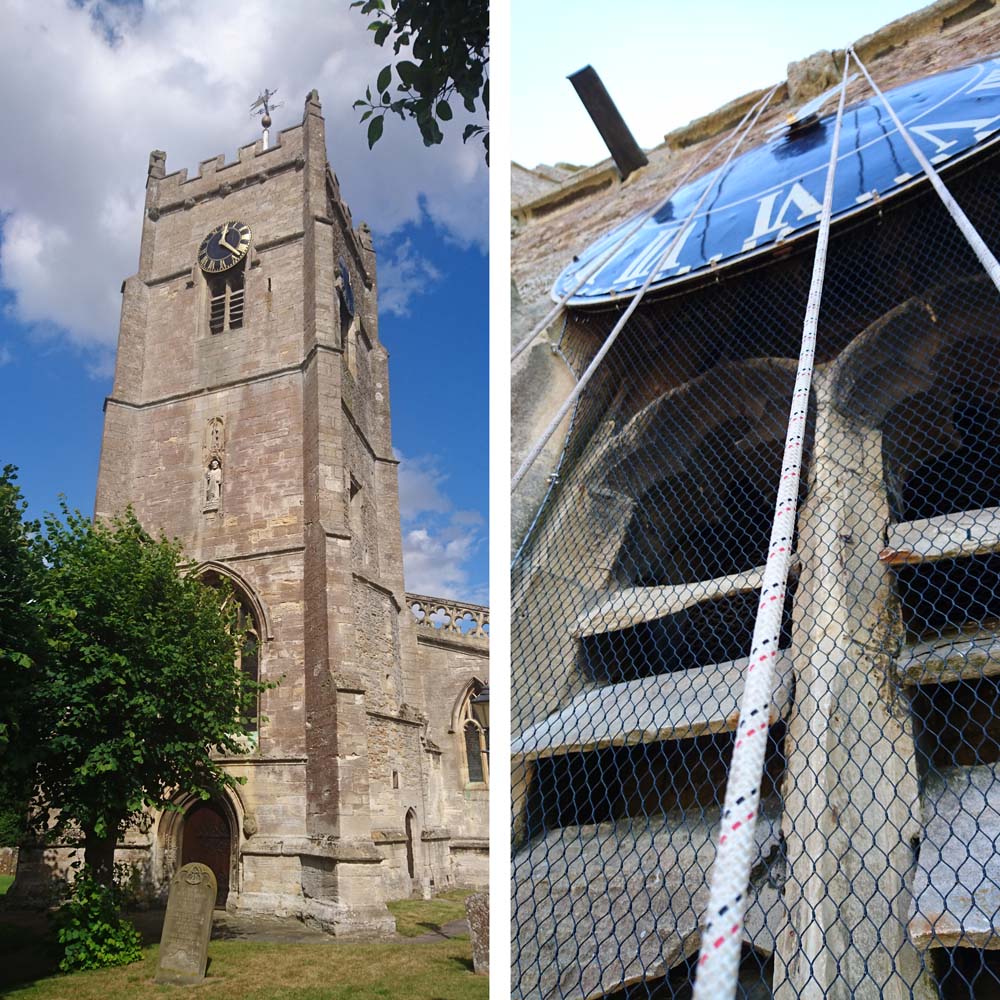
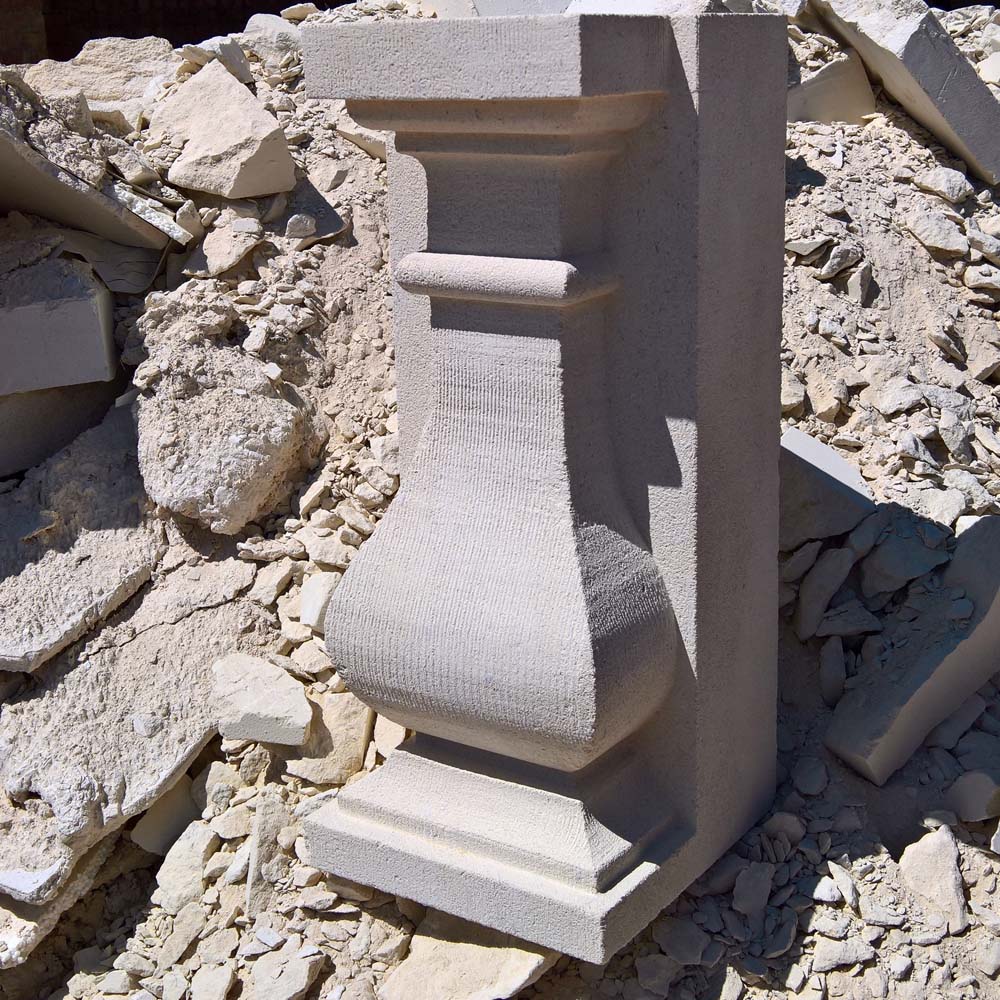
Contact

Dominic TolsonBA (Hons), FdSc
Stone Building Conservation
70 Weatherbury Way, Dorchester, Dorset DT1 2EG
Phone: 0776 888 0615